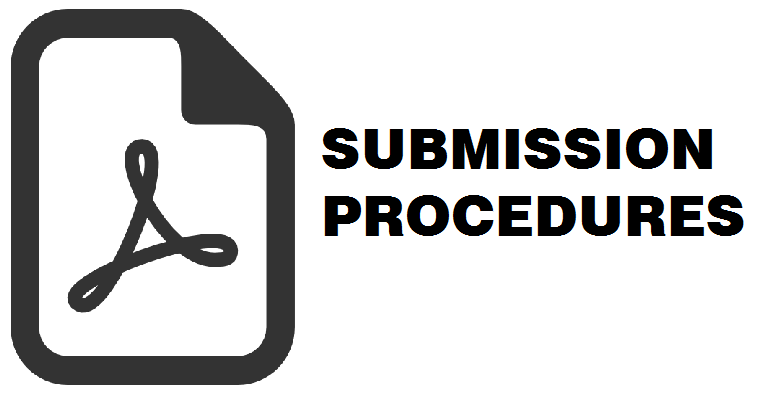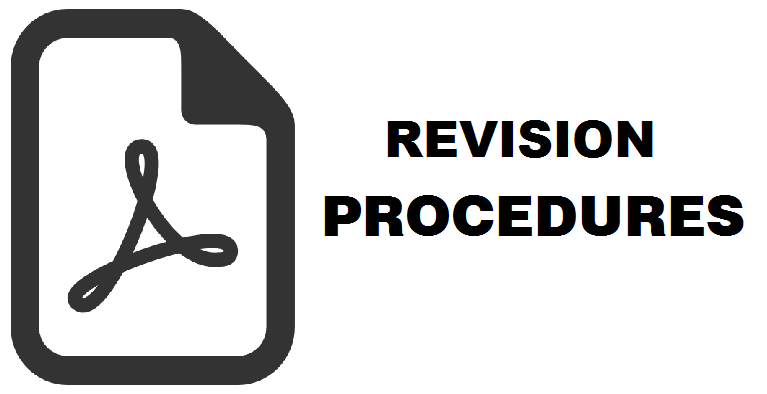A Lesson Learn from Empowerment Program of Integrated Cassava-Tapioca Agroindustry Actors in Pati District, Indonesia
Eva Banowati(1*)
(1) Department of Geography, Faculty of Social Science, Universitas Negeri Semarang
(*) Corresponding Author
Abstract
Frequently, empowering models for cassava farmers is programmed by government, but unsuitable to socio-geographic conditions, such as in Pati District. This study was aimed to depict social knowledge and lesson learn of cassava-tapioca agroindustry actors, and to understand the farmers’ acceptance, before and after the empowering program. The cassava farmer’s and tapioca producer’s knowledge and lesson learn were collected from 35 farmers and 19 tapioca producers. After empowering program, farmers asked to cultivate Cassesart cassava variety (UJ-5). However, the UJ-5 productivity that was planted in 65.40 Ha were declined. While, tapioca industries were also not directly increased farmers’ welfare. Farmers’ perspective in farming process was not changed after empowerment programs. Thirty-four farmers were not ready to build up new information. While, 16 from 19 tapioca producers (84.21%) object to improve labor quality and welfare. The founded result was associated with conventional farming practices, low price product and education background in Pati District, and was increasingly weakened by limited knowledge transfer of modern farming.
Keywords
Full Text:
PDFReferences
Abass, A. B., Awoyale, W., Alenkhe, B., Malu, N., Asiru, B. W., Manyong, V., & Sanginga, N. (2018). Can food technology innovation change the status of a food security crop? A review of cassava transformation into “bread” in Africa. Food Reviews International, 34(1), 87–102. https://doi.org/10.1080/87559129.2016.1239207
Aboajah, F. N., Onjewu, S. S., Chia, J. I., & Okeme, S. (2018). Socio-economic Determinants of Cassava Production in Benue State, Nigeria. International Journal of Environment, Agriculture and Biotechnology, 3(2), 550–557. https://doi.org/10.22161/ijeab/3.2.32
Adekunle, A., Osazuwa, P., & Raghavan, V. (2016). Socio-economic determinants of agricultural mechanisation in Africa: A research note based on cassava cultivation mechanisation. Technological Forecasting and Social Change, 112, 313–319. https://doi.org/10.1016/j.techfore.2016.09.003
Ajayi, O. J., Muhammed, Y., Olah, F., & Tsado, J. H. (2016). Effects of Information and Communication Technology (ICT) Usage on Cassava Production in Oturkpo Local Government Area, Benue State, Nigeria. Production Agriculture and Technology, 12(2), 49–58.
Akudugu, M. A., Guo, E., & Dadzie, S. K. (2012). Adoption of Modern Agricultural Production Technologies by Farm Households in Ghana: What Factors Influence their Decisions? Journal of Biology, Agriculture and Healthcare, 2(3), 1–13. Retrieved from https://www.researchgate.net/profile/Samuel_Dadzie/publication/235751741_Adoption_of_mo dern_agricultural_production_technologies_by_farm_households_in_Ghana_What_factors_influence_their_decisions/links/00463533b1249ebdf1000000.pdf
Armstrong, L. J., Gandhi, N., & Lanjekar, K. (2012). Use of Information and Communication Technology (ICT) tools by rural farmers in Ratnagiri District of Maharastra, India. Proceedings - International Conference on Communication Systems and Network Technologies, CSNT 2012, 2012, 950–955. https://doi.org/10.1109/CSNT.2012.202
Banowati, E., Indriyanti, D. R., Anisykurlillah, I., Pratikto, H. H., & Sari, Y. (2020). Increasing the competency of cassava farmers as a revitalization efforts of tapioca industries for food private realization. International Journal of GEOMATE, 19(72), 117–122. https://doi.org/10.21660/2020.72.ICGEO17
Banowati, E., Ngabiyanto, N., Syukurilah, I. A., & Danang Junior Trimasukmana. (2019). The Empowerment of Upstream Downstream Human Resources to Revitalise Tapioca Industry. MImbar, 34(2), 452–461.
Banowati, E., & Nugraha, S. B. (2018). Land Utilization Pattern in the Indonesian Forest: Cassava Cultivation in an Agroforestal System. In Plant Competition in Cropping Systems (p. 13). https://doi.org/10.1016/j.colsurfa.2011.12.014
BPS. (2020). Luas Panen Ubi Kayu Menurut Provinsi (ha), 1993-2015. Retrieved July 15, 2020, from https://www.bps.go.id/dynamictable/2015/09/09/879/luas-panen-ubi-kayu-menurut-provinsi-ha-1993-2015.html
Chhachhar, A. R., Qureshi, B., Khushk, G. M., & Maher, Z. A. (2014). Use of Mobile Phone among Farmers for Agriculture Information. European Journal of Scientific
Research, 119(2), 265–271. Retrieved from http://www.europeanjournalofscientificresearch.com
Croppenstedt, AndreGoldstein, M., & Rosas, N. (2013). Inefficiencies , Segregation , and Low Productivity Traps. Gender and Agriculture Inefficiencies, Segregation, and Low Productivity Traps, (February).
Demartini, E., Gaviglio, A., & Pirani, A. (2017). Farmers’ motivation and perceived effects of participating in short food supply chains: Evidence from a North Italian survey. Agricultural Economics (Czech Republic), 63(5), 204–216. https://doi.org/10.17221/323/2015-AGRICECON
Edhirej, A., Sapuan, S. M., Jawaid, M., & Nur Ismarrubie Zahari. (2015). Cassava: Its Polymer, Fiber, Composite, and Application. Polymers and Polymer Composites, 38(3), 555–570. https://doi.org/10.1002/pc
Ekanem, J., & T, A. (2018). Diagnosing the Dimensions of Benefits and Constraints of Information and Communication Technology (ICT) Utilization among Cassava Farmers in Uyo Agricultural Zone, South-South Nigeria. Asian Journal of Agricultural Extension, Economics & Sociology, 25(2), 1–10. https://doi.org/10.9734/ajaees/2018/41752
Forsythe, L., Posthumus, H., & Martin, A. (2016). A crop of one’s own? Women’s experiences of cassava commercialization in Nigeria and Malawi. Journal of Gender, Agriculture and Food Security, 1(2), 110–120.
Hamidi, M. A., & Banowati, E. (2019). Utilization of mocaf flour (modified cassava flour) for revitalization of the use tapioca flour in communities for empowering hulu-hilir human resources in wonogiri regency. IOP Conference Series: Earth and Environmental Science, 243(1). https://doi.org/10.1088/1755-1315/243/1/012081
Harris, F., Robinson, G. M., & Griffiths, I. (2016). A study of the motivations and influences on farmers’ decisions to leave the organic farming sector in the United Kingdom. In Sustainable Rural Systems: Sustainable Agriculture and Rural Communities (pp. 99–112).
Hudayana, B. (2016). Empowering Rural Women in Java through Cassava Culinary Business in The Refrom Era. 7th International Conference and Field Study in Malaysia, (December), 137–145. Kuala Lumpur: UTM.
Hussain Awan, S., Ahmed, S., & Hashim, M. Z. (2019). Use of Information and Communication Technology ICT in Agriculture to Uplift Small Scale Farmers in Rural Pakistan. American Journal of Engineering and Technology Management, 4(1), 25. https://doi.org/10.11648/j.ajetm.20190401.14
Hutabarat, B., Setiyanto, A., Kustiari, R., & Sulser, T. B. (2012). Conjecturing Production, Imports and Consumption of Horticulture In Indonesia In 2050: A Gams Simulation Through Changes In Yields Induced by Climate Change. Jurnal Agro Ekonomi, 30(1), 1–23.
Kawuki, R. S., Nuwamanya, E., Herselman, L., & Ferguson, M. E. (2011). Segregation of selected agronomic traits in six S 1 cassava families. Journal of Plant Breeding and Crop Science, 3(8), 154–160.
Luther, G. C., Mariyono, J., Purnagunawan, R. M., Satriatna, B., & Siyaranamual, M. (2018). Impacts of farmer field schools on productivity of vegetable farming in Indonesia. Natural Resources Forum, 42(2), 71–82. https://doi.org/10.1111/1477-8947.12144
Magfiroh, I. S., Zainuddin, A., & Setyawati, I. K. (2018). Maize Supply Response in Indonesia. Buletin Ilmiah Litbang Perdagangan, 12(1), 47–72. https://doi.org/10.30908/bilp.v12i1.309
Maru, R., Leo, M. N. Z., & Rahim, S. (2016). Oldeman Climate Zoning for the Agricultural Area. International Conferenve on Mathematics, Science, Technology, Education and Their Application, (October), 511–521. Makasar.
Mvodo, E. S. M., & Liang, D. (2012). Cassava sector development in Cameroon: Production and marketing factors affecting price. Agricultural Sciences, 03(05), 651–657. https://doi.org/10.4236/as.2012.35078
Nassar, N., & Ortiz, R. (2010). Breeding cassava to feed the poor. Scientific American, 302(5), 78–85.
Nwafor, C. U., Ogundeji, A. A., & van der Westhuizen, C. (2020). Adoption of ICT-based information sources and market participation among smallholder livestock farmers in South Africa. Agriculture (Switzerland), 10(2). https://doi.org/10.3390/agriculture10020044
Ogunleye, A. S., Adeyemo, R., Bamire, A. S., & Kehinde, A. D. (2017). Assessment of profitability and efficiency of cassava production among government and non-government assisted farmers association in Osun State, Nigeria. African Journal of Rural Development, 2(June), 225–233.
Putra, H. E., Tengah, K., Gorontalo, K., Marzaman, A., Gorontalo, U., & Gorontalo, K. (2019). Application of Participatory Leadership in Optimizing the Potential of the Agricultural Sector. Gorontalo: Journal of Government and Political Sudies, 2(2), 50–58.
Suryaningrat, I. B., Amilia, W., & Choiron, M. (2015). Current Condition of Agroindustrial Supply Chain of Cassava Products: A Case Survey of East Java, Indonesia. Agriculture and Agricultural Science Procedia, 3, 137–142. https://doi.org/10.1016/j.aaspro.2015.01.027
Widodo, Y. (2018). Cassava Productivity for Eradicating Hunger and Poverty in Rural Areas of Indonesia. Rural Sustainability Research, 39(334), 32–40. https://doi.org/10.2478/plua-2018-0005
Wijayanti, F., Novianti, F., Karim, M. A., Sudaryanto, A., & Carolina, C. (2017). How to Improve Business Performance: A Financial Analysis on Micro Tapioca Industry. 2nt International Conference on Economic Education Anf Entrepreneurship, (October 2018), 240–246. https://doi.org/10.5220/0006884002400246
Wyche, S., & Steinfield, C. (2016). Why Don’t Farmers Use Cell Phones to Access Market Prices? Technology Affordances and Barriers to Market Information Services Adoption in Rural Kenya. Information Technology for Development, 22(2), 320–333. https://doi.org/10.1080/02681102.2015.1048184
Yulianto, K., Sukardi, Indrasti, N. S., & Raharja, S. (2020). Situational analysis and prospect of interest-free financing in tapioca agro-industry. IOP Conference Series: Earth and Environmental Science, 472, 012051. https://doi.org/10.1088/1755-1315/472/1/012051
Article Metrics
Refbacks
- There are currently no refbacks.
Copyright (c) 2020 Eva Banowati

This work is licensed under a Creative Commons Attribution-NonCommercial 4.0 International License.
Accredited Journal, Based on Decree of the Minister of Research, Technology and Higher Education, Republic of Indonesia Number 225/E/KPT/2022, Vol 54 No 1 the Year 2022 - Vol 58 No 2 the Year 2026 (accreditation certificate download)
ISSN 2354-9114 (online), ISSN 0024-9521 (print)









